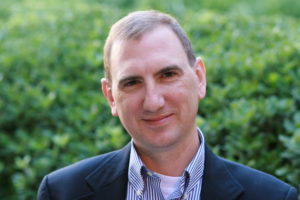Trinity Lutheran: Making Friends on the Playground
With a 7-2 ruling in Trinity Lutheran Church v. Comer, the Supreme Court extended its recent, yet largely unheralded, streak of bipartisanship in resolving religious-liberty cases. Indeed, with the exception of Hobby Lobby in 2014, the Court has acted with broad consensus in every free-exercise dispute it has decided in the past 20 years—from religious accommodations at work and in prison to the right of churches to hire and fire ministers free from government interference to faith-based limits on drug laws. And in its support for a church’s right to participate in a state playground-resurfacing program, Trinity Lutheran is no exception. Divisions linger under that surface, but the Court’s relative unity is notable in an area that needs it.

Trinity Lutheran involved a challenge to Missouri’s refusal of public funds to a church to rubberize its preschool playground surface. The funds were available to non-profit entities under a state-sponsored tire-recycling program for that purpose, and although the church was otherwise “fully qualified” its application was rejected because it was a church. The government rooted its denial in a separate provision of Missouri law forbidding public aid to churches, a common approach in many states under the so-called Blaine Amendment movement of the late nineteenth century.
The Supreme Court held that Missouri’s refusal to include the church in its resurfacing program violated the Free Exercise Clause. As Chief Justice Roberts wrote for the majority, the state’s action “expressly discriminates against otherwise eligible recipients by disqualifying them from a public benefit solely because of their religious character.” This, the Court urged, is “odious to our Constitution [and] cannot stand.” The Court distinguished its approval in a 2004 case of a ban on the use of public scholarships for devotional study because, unlike the church here, the plaintiff there was denied funds for what he “proposed to do,” not “who he was.”
In a likely effort to maximize support for the ruling, the Chief Justice added in a footnote that the Court’s holding was limited to “express discrimination based on religious identity with respect to playground resurfacing” and did not extend to broader questions of “religious uses of funding or other forms of discrimination.” And although Justices Thomas and Gorsuch appeared game for that extension in concurrence, while Justices Sotomayor and Ginsburg dissented altogether, the Court’s measured approach sufficed to garner seven votes and a win for the church.
My colleague Michael McConnell rightly observes that Trinity Lutheran breaks new ground in recognizing an organization’s right not to be excluded from a neutral public benefit based on its religious nature. As he notes, prior cases were limited to individuals (as opposed to groups), discriminatory regulations (as opposed to benefits), and whether states were allowed, if not required, to support religious programs (as opposed to secular ones). By insisting on non-discrimination for a public benefit to a private group, the Court applied a neutrality condition to what it calls “the play in the joints” between the Free Exercise and Establishment Clauses.
To critics, requiring payments to a house of worship is nonetheless troubling, and not only because of the specter of government sponsorship but also the state’s potentially corrosive effect on the church—a concern shared by both secular and religious groups. In dissent, Justice Sotomayor cites James Madison’s concern over compelled support for religion being “hostile to religious freedom.” And despite the footnote, the prospect of a constitutionally mandated extension to religious schools of voucher or related programs worries many reform-minded education advocates, as my other expert colleague Bill Koski has detailed. The day after Trinity Lutheran came down, in fact, the Court ordered reconsideration in four voucher-related cases.
Whatever the broader and undoubtedly important implications, however, the Court’s general consensus against exclusions based on religious identity may indeed serve as a helpful framework in this area of law which often seems irreconcilably divided. It also addresses, if indirectly, the anti-Catholic animus (previously noted by several and diverse Justices) that marked the Blaine Amendments’ passage a century ago—a history which should not be lost in protecting religious minorities today. At a minimum, from my perspective in directing a law-school clinic that, among other things, is dedicated to building bridges in and through universal religious liberty, the Court’s continued effort at unity on these matters is welcomed.
Jim Sonne is the founding director of Stanford Law School’s Religious Liberty Clinic, the only full-time program in the country where students learn the practice of law through supervised litigation in that field. He is an experienced and award-winning teacher, practitioner, and scholar, with expertise in law and religion issues.
